It started with me noticing this pattern of 4-digit palindromic numbers starting on the 15th row of the normal Pascal’s triangle:
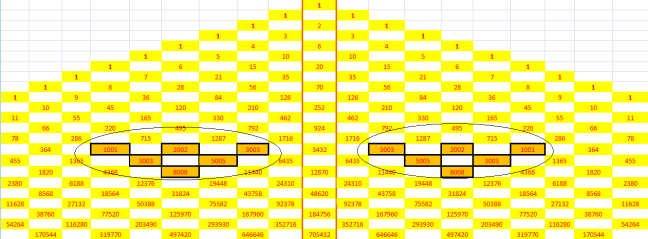
Zooming in, I noticed that the palindromic numbers in the Pascal’s triangle (i.e. 1001,2002,3003,3003,5005 and 8008) form an inverted triangle of some sort. What’s more intriguing is that they are missing the other 4-digit palindromic numbers in the series which are 4004, 6006, 7007 and 9009 .
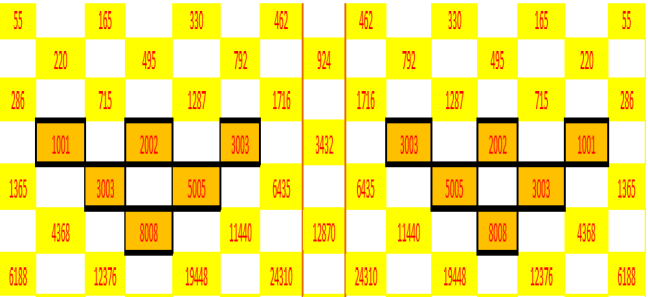
I started making several assumptions until I entertained the idea that the said missing palindromic numbers are hidden inside the empty boxes adjacent to the existing ones in the Pascal’s triangle. I also thought that the palindromic numbers are somehow keys to look for the missing ones. I began to research about 4-digit palindromic numbers until I came about this via
https://en.wikipedia.org/wiki/1001_(number)
“One thousand and one is a sphenic number, a pentagonal number, a pentatope number and the first four-digit palindromic number.”
It was through this that I surmised that the significance of this number must mean something to the Pascal’s triangle and that if I will use 1001 as the border of my theorized hidden Pascal’s triangle, I might be able to find the missing 4004,6006,7007 and 9009. Thus, with a little bit of filling in the blanks, I came up with this:
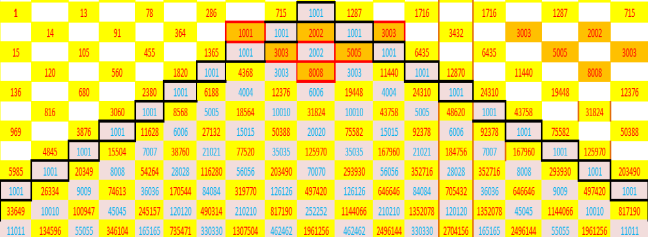
A blown up version below will, hopefully, help me explain my theory: Notice that the yellow boxes (plus the brown boxes shaped like an inverted triangle) are part of the normal Pascal triangle while the blue-colored numbers in fuschia-colored boxes are my theorized hidden palindromic Pascal’s triangle. Unlike the normal Pascal’s triangle which has the number 1 surrounding its edges, my own hidden palindromic triangle has 1001 as its borders. But like the normal Pascal’s triangle, my version also follows the original rule of adding the two numbers on top to get the value of the one below them.
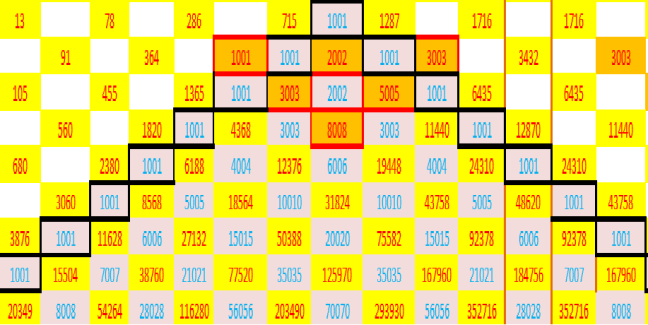
And going to back to the missing 4-digit palindromic numbers, I was amazed to find them in this hidden palindromic Pascal’s triangle as shown below:
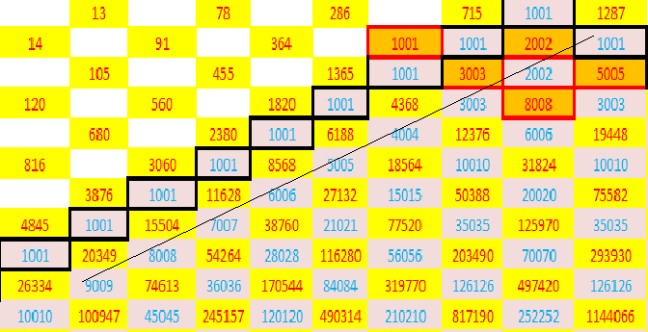
Aside from this, I also noticed that, as in the normal Pascal’s triangle, the 1st 5 rows of numbers are palindromic when they are connected as shown below:
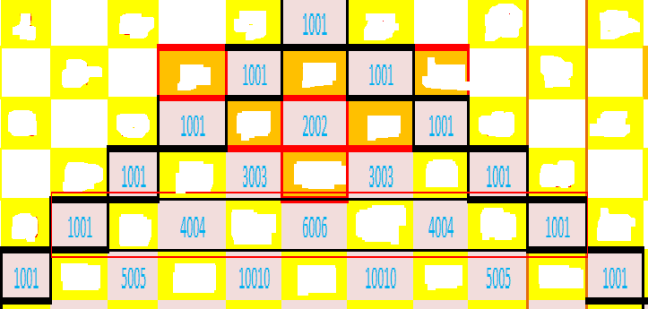
1001
1001 1001
1001 2002 1001
1001 3003 3003 1001
1001 4004 6006 4004 1001
I, intentionally, erased the normal Pascal triangle’s numbers above to emphasize my hidden Pascal’s triangle. Let’s compare this with the normal Pascal’s triangle below:
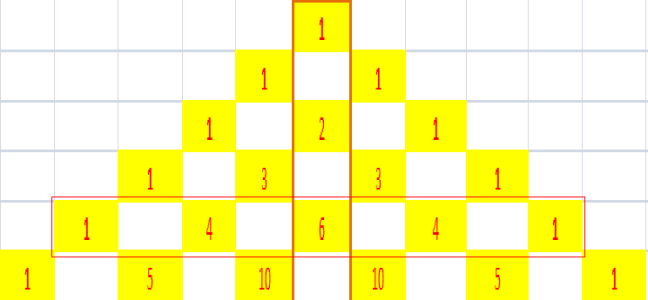
Originally I thought that from the 6th row downwards, the numbers are no longer palindromic. I was very glad that someone from mathisfun.com corrected me by saying that the sixth row down to infinity are still palindromic once you use higher base (i.e. Base 11, etc.) digits with numbers greater than 9. Thus
1 5 10 10 5 1
should be written as
1 5 A A 5 1
In this connection, in my inserted palindromic Pascal’s triangle, the 6th row
![]()
should also be written as:
1001 5005 A0A A0A 5005 1001
Ergo, as in the original Pascal’s triangle, the numbers in my inserted Pascal’s triangle stay palindromic until infinity.
And if you look at the diagram below, you can see that my hidden Pascal’s triangle exist on both sides of the original Pascal’s triangle overlapping each other symmetrically. Furthermore, the whole diagram eerily forms a structure somewhat (though not exactly) similar to the three (3) pyramids of Giza.

I also noticed that there are hidden numbers above the original Pascal’s triangle as shown below.
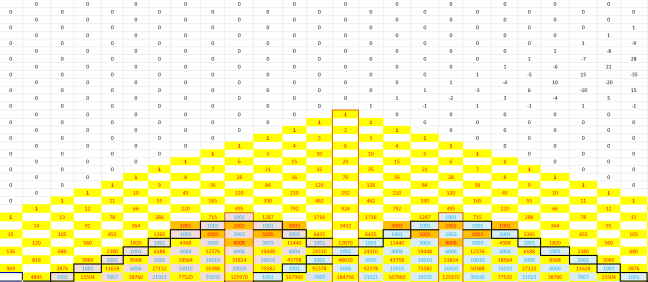
Zooming in, the hidden numbers result from the existing numbers below them.
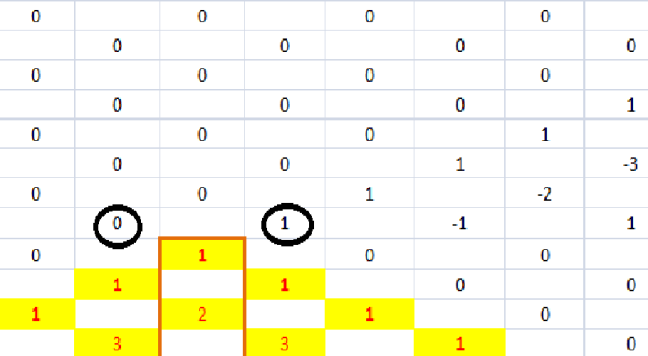
For example, the apex number 1 in the original Pascal’s triangle is, for me, made possible by the encircled zero (0) and one (1) above it. Although, the two encircled numbers could be reversed as 1 and 0 respectively. Doing so would also reverse the hidden numbers accordingly (makes me wonder if this has something to do with the probabilistic nature of reality).
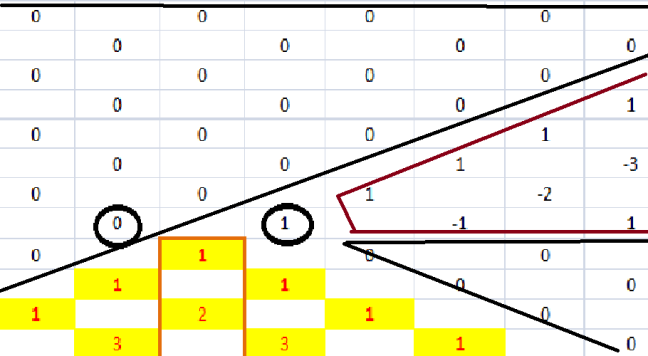
But what intrigues me more is what do the zeroes (enclosed in black lines) or what do the mirror numbers (enclosed in red lines) mean? According to https://www.archimedes-lab.org/pascaltriangle.html, the earliest form of this triangle “occurs in Indian mathematician Pingala’s book on Sanskrit poetics that may be as early as 450 BC as Meru-prastaara, the “staircase of Mount Meru”.” Mount Meru means the abode of the gods, in Sanskrit. It is also interesting that Meru is also called Sumeru, which is very close to the word Sumer. Was this triangle a silent handed-down mathematical tradition from the cradle of civilization? If so, one could only ponder the significance of this triangle in the grand scheme of things.
Again, here are the mirror numbers expanded below:
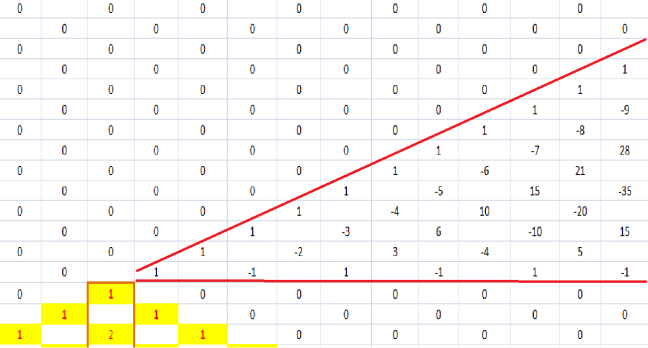
I coined them ‘mirror numbers’ because they mirror the Pascal’s triangle’s original sequences underneath them. As you can see below, the edges of the mirror Pascal’s triangle consist of the diagonal +1s (with the green line) and the alternating horizontal +1s and -1s (with the blue line).
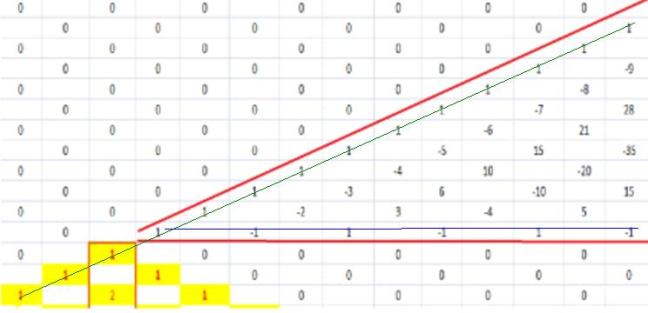
The mirror numbers of the counting number sequence (1,2,3,4, etc.) exist as the negative numbers (-1,-2,-3,-4,etc.) as shown below:

The triangular number sequences (1,3,6,10,15,21,etc.) have their exact replicas on the mirror Pascal’s triangle as shown below:
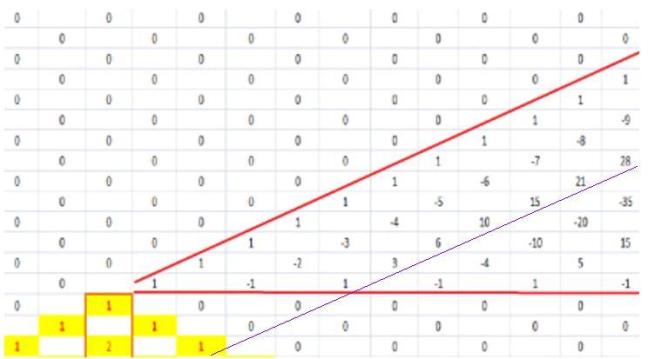
The tetrahedral numbers (1, 4, 10, 20, 35, etc.) exist as their negative counterparts in the mirror Pascal’s triangle (-1,-4,-10,-20,-35, etc.) as shown below:

As of this writing, I’m still trying to figure out what these hidden numbers in the Pascal’s triangle are all about. Please help me if you can.
Brilliant! Thank you!
LikeLike
Thanks for dropping by. Warm regards.
LikeLiked by 1 person
Peace and blessings. I am going through your blog. I am also open to any links or referral material on the topic 🙂 Thank you for making the effort to share truth.
LikeLike
Glad I could help in my own little way 🙂
LikeLike
interesting. did you continue looking into this?
LikeLike
Yes, sir. Right now, I’ve discovered that there are numbers used in a String theory equation that show up on my extended Pascal’s triangle. Please click this YouTube link https://www.youtube.com/watch?v=ss7i1ZL5a2Y&t=64s if you’re interested. Thanx.
LikeLike
Hello, great article. I would like to republish it at my website and link back to this one if you don’t mind to give higher SEO and provide my readers with good sources as much as I can. I wrote this article myself among numerous others on number magick in the science section please feel free to email me @ bodhi.karma98@gmail.com to let me know. TY for your work
http://esotericawakening.com/the-occult-significance-of-the-number-6
LikeLike
Yes, you may republish it on your website. Thanks for taking the time to read this article.
LikeLike
Sorry, I haven’t logged in to wordpress or this gmail for a while now but thanks for your gracious comments. Cheers!
LikeLike